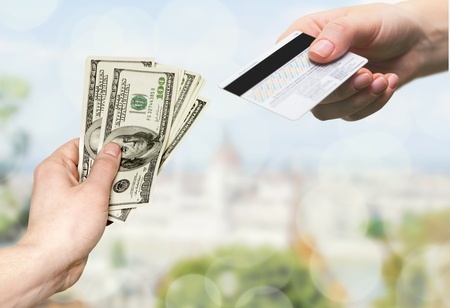How Credit Cards Work
“Despite the pile of offers you might receive from credit card issuers, without a credit history, getting that first credit card can be impossible–no credit history, no credit card; no credit card, no credit history.” –Lorayne Fiorillo, author of Financial Fitness in 45 Days
When it comes down to how much it’s going to cost you to use a credit card, the following are the primary expenses you should consider:
Teaser Rate
This is the initial interest rate charged for the first 6 months or so that you own the card. It’s how a creditor schmoozes you into transferring all of your debt onto its card. Since it’s highly unlikely you’ll be able to pay off all that debt by the time the teaser rate ends, you may wind up paying a lot more in interest at your new rate than you would have if you’d just kept your debts where they were.
High Annual Fees
With the credit industry as competitive as it is now, you can usually find a card that doesn’t charge an annual fee. Most people who choose to pay an annual fee do so to take advantage of other perks, such as a high or nonexistent credit limit or generous frequent flyer mile allocations.
Penalty Interest
This is the fee charged whenever you make late payments or exceed your credit limit. Creditors aren’t required to specify when they will impose penalty rates, which can run as high as 30%. Be sure to ask questions up front if you anticipate running into these kinds of problems.
Grace Period
Some credit cards give you a 25-day or so grace period before charging interest on a new purchase. Others start charging interest on the day you make your purchase–so it can save you money to find out the card’s terms first.
Cash Advances
It’s nice to know you can get cash from your credit card whenever you need it, but be aware that many cards charge higher interest rates on cash advances.
Secured Credit Cards
A great way to get your child started is by giving them a secured credit card. The best part of a secured card is they look like every other MasterCard and Visa, only with one distinct difference. It’s secured by money you have on account with the issuing bank, either in a savings account, money market fund, or CD.
You may apply for a secured card by opening a bank account. Your credit limit will be your deposit amount, and if you fall behind on your payments, the card issuer can take payments from your account. The advantages of a secured card are that your child is restricted from spending more than he has on deposit. Your bank may even pay interest on the money he has on deposit.
There are many types of options now with pre-paid credit cards. Check with your local financial institution for details on the products they offer.

